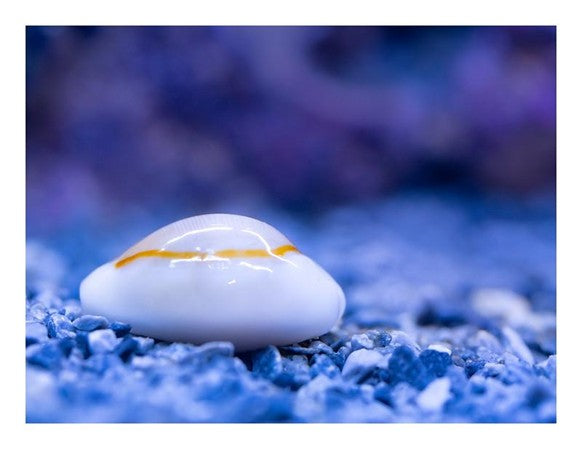Cutting your dog's nails is the cursed task of loving your furry friend – for both us and them! Unless your pooch is a pro at sitting for their mani-pedi, you just might fall into the category of dog owners whose best buddy is part of the anti-nail-cutters club.
Nail cutting is an essential part of dog grooming and is crucial to their health and well-being, which can make an unsuccessful attempt even more stressful. Here at Pisces, we’re not only familiar with the tools and tricks best suited to cutting a dog's nails, but we’re dog lovers ourselves who know the struggle.
This is our guide to cutting your dog's nails, including tips and tricks on how to reduce stress for your dog (and yourself)!
You Will Need:
- A pair of nail cutters made for dogs
- Styptic powder (or corn starch in a pinch!)
- Treats (or a lick mat, filled Kong toy, sniffle mat, etc.)
- A towel
Keep Calm and Carry On
Many dogs are fearful of getting their nails cut due to a bad past experience or negative associated feelings. Dogs who have had their nails cut too far back before may have experienced pain, and are using their learned knowledge that nail cutters = pain. Others may be distressed by the sound or pressure of the clippers, the fact that they are being restrained, their paws being held, and many other sensory-related reasons.
Reducing stress for your dog during nail-cutting time is one of the most integral steps of the process, and is crucial to prevent any potential injuries and/or further negative associations. Some ways that you can desensitize your dog and hopefully reduce stress for them include:
- Cutting their nails at a young age
- Portray clipping as a soothing experience – warm them up to it by simply sitting near the clippers, making soft noises and giving pets
- Try new nail clippers that your dog won’t associate with past pain
- Present new clippers like a new exciting toy to reduce negative associations
- “Practise” and work your way up to cutting by gently tapping or touching your dog's paws and nails
- Let them examine the clippers (while locked) to familiarize themselves
And of course, if your dog still seems absolutely horrified by the idea of having their nails cut it may be time to explore alternatives. Check out the last section of this blog to see some options on how to keep up their manicure schedule without traumatizing anyone.

Choosing Nail Cutters
There are a few different types of cutters, with the most common being the standard cutters that cut through the nail when closed like a pair of scissors. Other options include guillotine nail cutters, which as the name suggests, “chop” the nail once inserted. Guillotine clippers are preferred for dogs with smaller and thinner nails – they are not robust enough to chop through larger dogs' nails and are slower to operate than regular cutters.
For most purposes, we always recommend going with a basic pair of nail cutters that are made for dogs and best fits their nails.

Cutting Your Dogs Nails
So you’ve gathered your supplies, given both yourself and your dog a pep-talk, and it's time to go. If you have another person that can assist you, now would be a great time to grab them.
Step One: Place your equipment in a position that will be easily accessible to you or your helper before beginning to handle your dog.
Step Two: Position your dog in a way that is sturdy but comfortable. You can keep them in your lap while sitting on the floor or a low chair and may find that wrapping them in a towel beforehand might be helpful.
Be sure not to prohibit their movements too much at this stage, especially if they’re getting anxious. Restraining them too much can create those same negative associations we mentioned earlier.
For larger or extra wiggly pups, try wrapping them in a towel or having one person hold them and the other use the nail clippers.
Step Three: Examine each nail individually. You’ll want to keep an eye out for the kwik – a soft cuticle containing a blood vessel and nerves that run through your dog's nail. The kwik should run down approximately 2/3 of your dog's nail and will bleed if cut. Look for a pink, red, or dark line down the middle of the nail and be sure to avoid it.
*If you do accidentally cut the kwik: Use a styptic powder to stop bleeding and prevent the wound from staying open to bacteria. Dab a small amount on the affected area.
Step Four: One at a time! Once you've successfully cut one nail, move on to the next. Take breaks as needed to allow your pup to rest and relax.
Step Five: Utilise positive reinforcement and position nail cutting as a fun and worthwhile experience with a yummy treat to celebrate with afterwards.
*Pro Tip: Keep your furry friend occupied with a lick mat, filled Kong toy, snuffle mat or other puzzle treat toy – it will not only prevent them from focusing on the nail cutters but will make the process more fun!

Alternatives to Cutting Your Dog's Nails
If you are still unable to cut your dog's nails, here are some alternatives:
If your dog's main issue is the clipping itself, trying a file will remove any pull on their paws.
Dogs who regularly walk on surfaces like pavement or concrete wear down their nails as the rough texture “files” them down over time. However, be aware that some dogs experience paw irritation from walking on rough textures.
If all else fails, taking your dog to the vet or groomer is the best option. While more expensive, visiting a professional may be less stressful for both yourself and your dog, and will result in a finished cut.
Lastly, good luck! If you have any questions about cutting your dog's nails or are in need of any grooming supplies for your dog, please give us a call or pay a visit to our pet store in Calgary!




